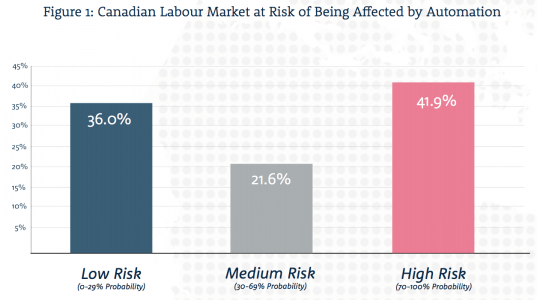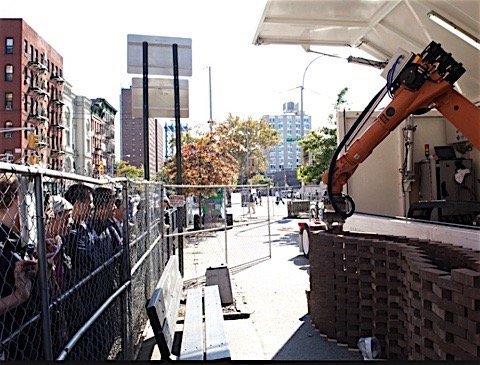
A Stratford, Ontario manufacturer of rolling bearings and related systems for the global auto industry is the latest company to receive support from the provincial government’s Southwestern Ontario Development Fund (SODF). Schaeffler Canada received $1.3 million of public money which, along with $11.8 million of private funds, will finance the addition of two assembly lines and the purchase of new automation equipment. The investment in the Canadian subsidiary of the Schaeffler Group, a global automotive and industrial supplier, will create forty-four new jobs and retain 362 existing positions, the government statement says.
The SODF has invested approximately $95 million in the region as part of the government’s economic strategy to create the “jobs of the future,” meaning those requiring high-quality college and university education, in innovative, high-growth, export-oriented businesses.
The announcement of this latest investment in automation in the auto sector comes just days after the release of a new report on the subject from the Brookfield Institute for Innovation and Entrepreneurship at Ryerson University. That report, titled The Talented Mr. Robot: The Impact of Automation on Canada’s Workforce, says that automation is transforming traditional occupations and changing many daily tasks done by Canadians. It also has the potential to create new jobs.

Already, according to the report, 42 per cent of the Canadian labour force is at a “high risk” of being affected by automation, meaning the replacement of human workers by technology and computerization. Whereas automation has thus far been more restricted to routine, manual tasks, advances in artificial intelligence and robotics are allowing automation to enter the realm of cognitive, non-routine tasks and occupations, including driving transport trucks and even conducting job interviews.
The report emphasizes that while 42 per cent of employed workers could be replaced by automation, this does not mean that all of those jobs will be lost. Many, it says, will be restructured and new jobs created. The vast majority of the high-risk occupations are in office support and general administration, sales and services, transportation and distribution, lower skilled technical occupations in health, natural and applied sciences, as well as manufacturing and construction labourers and assemblers.
An industry that apparently could benefit from automation, but is not likely to do so in the short term, is trucking. The industry is in such desperate need of drivers that, according to The Canadian Trucking Alliance (CTA) it is at the edge of a demographic cliff as the shortage continues to accelerate. The industry is projected to face a shortage of 34,000–48,000 drivers by 2024, depending on various factors, including how attractive the occupation is seen to be. By that year, the majority of drivers will be more than forty-nine years old, while the share of younger drivers has been dropping. Unpredictable working hours and long time spent away from home were found to be deterrents to recruitment of new drivers.
As well, trucking is a labour-intensive business in which labour accounts for 20 per cent of costs, according to the CTA.

While automation is an obvious solution to the problem of a growing shortage of drivers and potentially to the problem of high labour costs, fully automated trucks are not likely to be operational by 2024, the forecast period of a study conducted by transportation consultants CPCS. Therefore, the industry does not see automation as a means to resolve labour shortages. Rather, automation will likely introduce itself “piecemeal” starting with driver assist technologies, which could allow drivers to do other things while behind the wheel.
Even if the trucking industry is not likely to benefit fully from automation in the short term, other industries are facing a different crisis which automation could help resolve today. Many companies in the property and casualty insurance industry, for example, which is said to operate in an ultra-competitive market, with “ongoing pressure on margins,” low investment yields and other profit-cutting factors, are facing extinction unless they find ways to cut costs. One of these ways could include process automation, writes Janice Deganis in Canadian Underwriter. Traditional insurance firms need to learn from the “fintechs”—the online lenders—to use technology to deliver the convenience and value customers demand, in the form of new products and services.

In some cases, companies that have already embraced automation are now preaching the word. On June 21, Cavalier Tool & Manufacturing Ltd. will present a seminar on improving tool room productivity through automation. Productivity improvements such as shorter delivery times, more rapid enhancements and lower costs are the promised benefits of a highly efficient shop that runs “24/7 with minimal intervention.”
Meanwhile, advances in the use of intelligent data and the Internet of things mean that it is now possible for oil wells, previously considered “dumb” technology, to operate themselves autonomously. Hundreds of thousands of dollars in oil production costs can be saved “for the price of a smartphone,” according to Nav Dhunay, president and CEO of ambyint. In a piece in The OGM, Dhunay writes that “the dumber the products, the greater the opportunity.” The ambyint platform can provide well managers with real-time information and remote control over each well, giving them the ability to autonomously maximize the efficiency of every well and alert producers instantly of on-site problems.






























